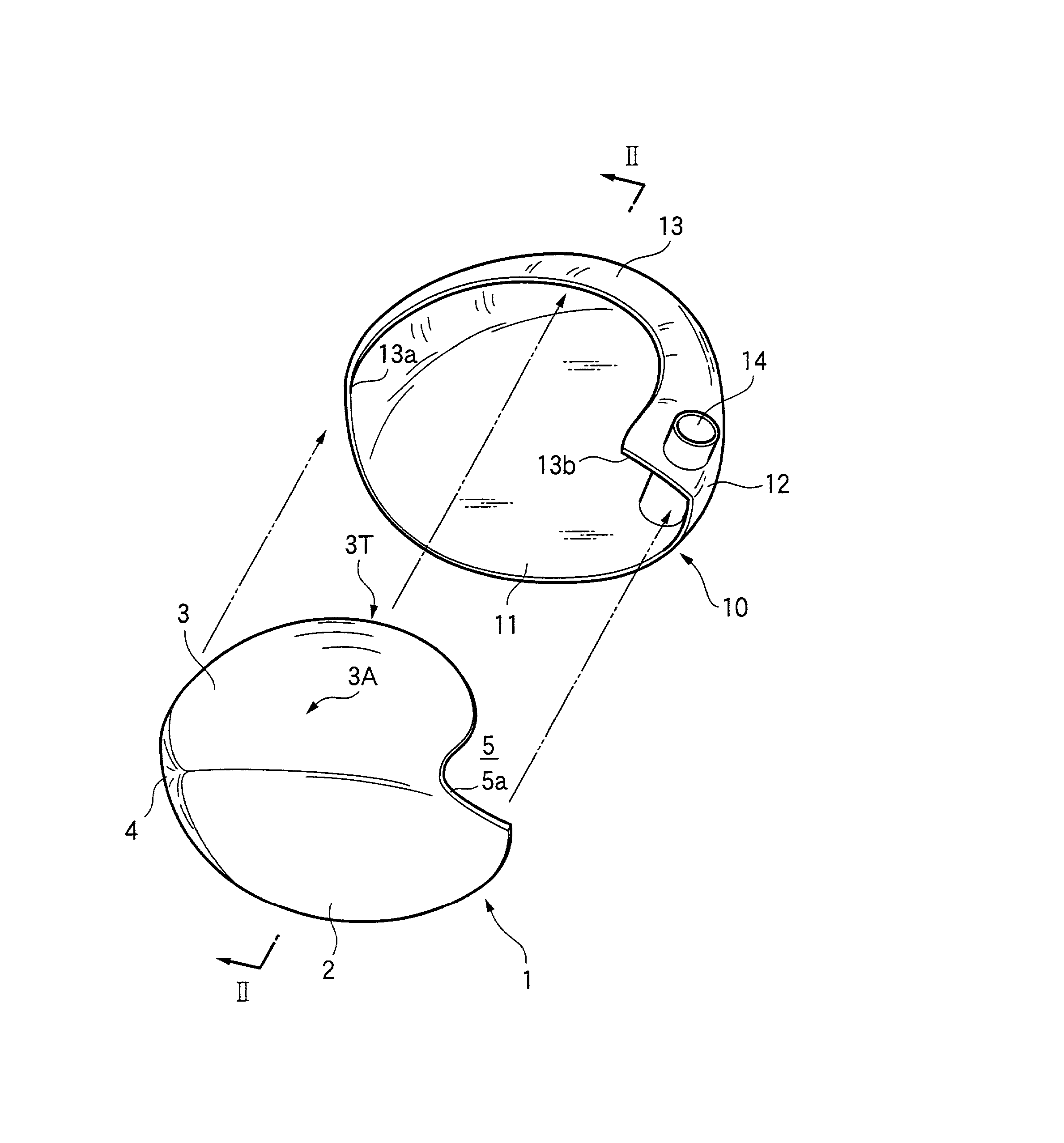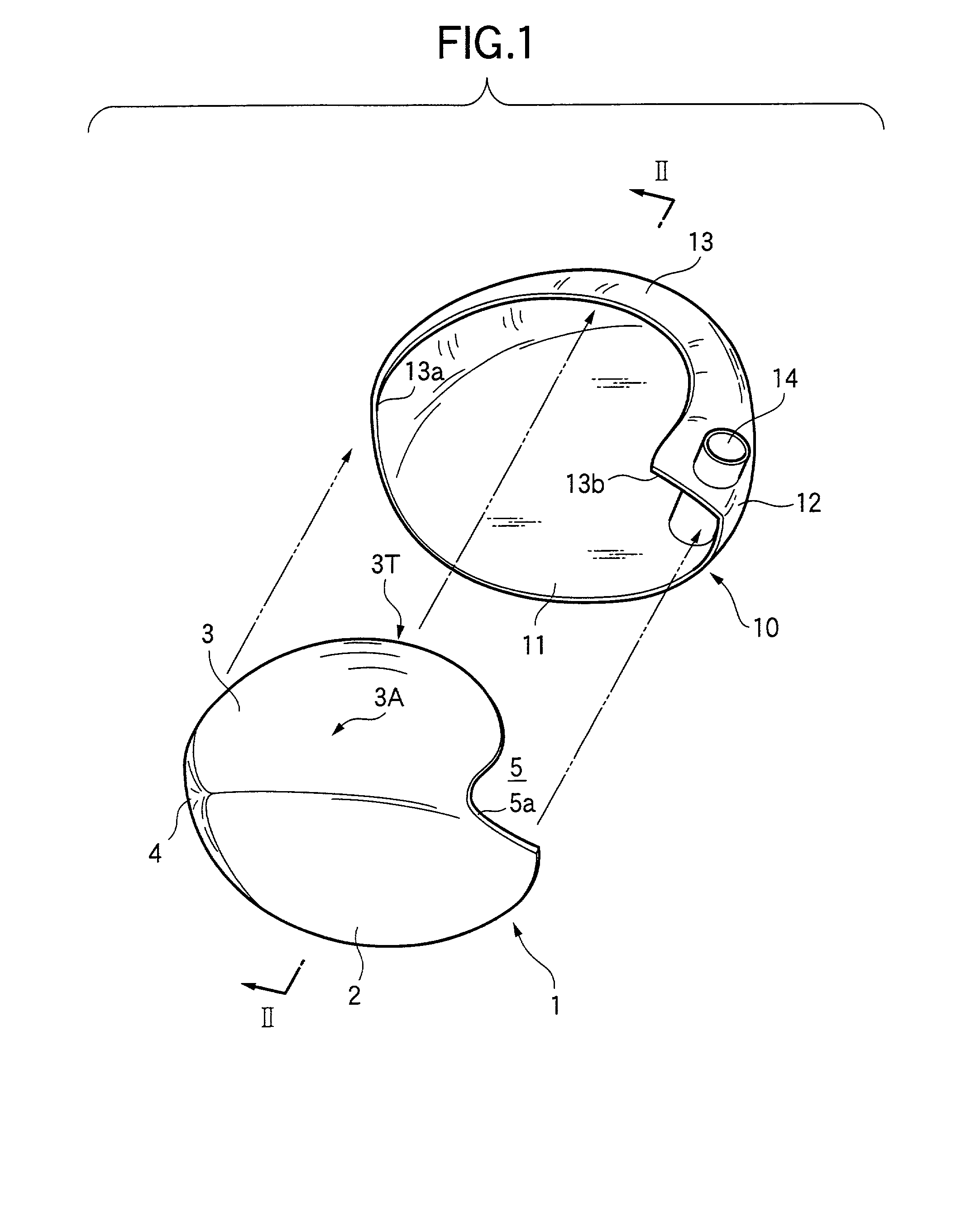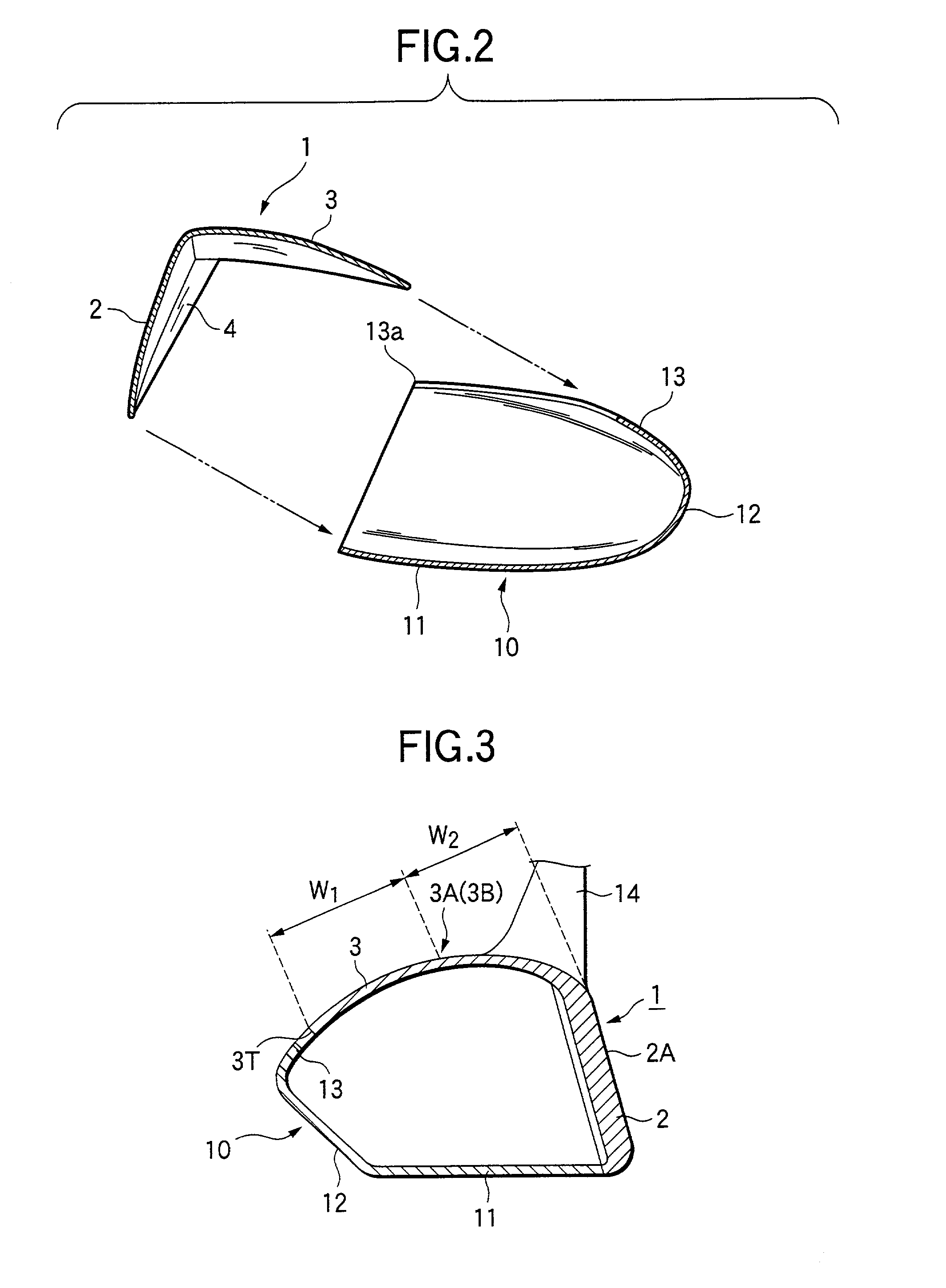Golf club head
a golf club and head technology, applied in the field of golf club head, can solve the problems of insufficient initial launch speed of the ball, inability to obtain sufficient launch angle with a head deformable, and increase the extra weight of the head
- Summary
- Abstract
- Description
- Claims
- Application Information
AI Technical Summary
Benefits of technology
Problems solved by technology
Method used
Image
Examples
examples 1 and 2
[0068] Golf club heads in Examples 1 and 2 had a configuration described in the embodiment 1. In Example 1, a Ti-6Al-4V alloy was used for the front part 1 formed by integrally casting the face portion and the crown portion. On the other hand, in Example 2, a Ti-6Al-7Nb alloy was used. The thickness of the center portion of the face portion was set to 3 mm, and the thinnest portion of the peripheral portion of the face was set to 2.5 mm. The average thickness of the crown portion was set to about 1.2 mm, and the thickness of the vicinity of the crown highest portion was set to about 0.9 mm. The head body portion including the sole portion and the hosel portion was produced by casting with a Ti-6Al-4V alloy in each of Examples 1 and 2. The thickness of the sole portion and the side portion was 1.2 mm.
[0069] A margin having a welding thickness of 1.5 mm was provided in the welded portion other than the face portion between the front part 1 and the back part 10. The front part 1 and th...
example 3
[0075] A golf club head of the example 3 has a structure described in the embodiment 2. A round bar of a Ti-4.5Al-3V-2Mo-2Fe alloy (SP700) produced by a forging machine was used to manufacture a golf club head according to the present invention shown in FIG. 11. First, this round bar was heated to about 800.degree. C., and a face portion and a crown portion were molded integrally by hot forging. This molding was performed through three times of hot forging stages of rough forging, main forging and finish forging.
[0076] In the obtained front part, the thickness of a center of the face portion was 2.7 mm, the thick ness of a periphery of the face portion was 2.3 mm, and two ribs 3 mm wide and 0.3 mm high were provided in a back surface portion. These ribs were provided to extend in the height direction of the face portion and substantially over the whole area of the height thereof. The ribs were formed at an interval of 30 mm so that the center portion between the ribs was located in ...
PUM
 Login to View More
Login to View More Abstract
Description
Claims
Application Information
 Login to View More
Login to View More - R&D
- Intellectual Property
- Life Sciences
- Materials
- Tech Scout
- Unparalleled Data Quality
- Higher Quality Content
- 60% Fewer Hallucinations
Browse by: Latest US Patents, China's latest patents, Technical Efficacy Thesaurus, Application Domain, Technology Topic, Popular Technical Reports.
© 2025 PatSnap. All rights reserved.Legal|Privacy policy|Modern Slavery Act Transparency Statement|Sitemap|About US| Contact US: help@patsnap.com



